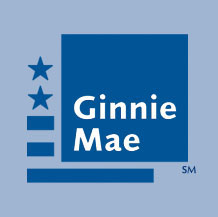08.21.2009
11.05.2010 repaired broken gov links with pdf archive file

Now What? – Another $1 Trillion Bailout?
original article written by Net Advisor™
If you have not been following the news, hold on to what is left of your wallet and watch this Trillion Dollar bailout coming soon.
Recall last September 2008, the two mortgage giants, Fannie Mae and Freddie Mac was sent into receivership by the U.S. Government after concern of their imminent failure. These two mortgage giants make guarantees on conforming home loans, reportedly holding some $5 Trillion Dollars worth of loans.
Why did the US Gov take them over and not let them file bankruptcy? Because the $5 Trillion would immediately go on the tax payer’s balance sheet and that would not look to good for any President.
Have You Met My Sister, Ginnie Mae?
You should be hearing a lot more about Fannie and Freddie’s other counterpart – Ginnie Mae or the Government National Mortgage Association (GNMA).
“Ginnie Mae’s mortgage exposure is expected to top $1 trillion by the end of next year (2010) or far more than double the dollar amount of 2007.”
— (Source: Wall Street Journal)
Ginnie Mae: The Next Big Taxpayer Bailout (Video)
According to the Wall Street Journal, nearly 9 out of 10 U.S. mortgages are now guaranteed by the U.S. tax payer.
So what’s the problem?
Well, those who qualify for a FHA backed loan is part of the problem. FHA backed loans only require up to 3.5% down payment. A person with a FHA backed loan needs NO CREDIT score. As people with no money and no credit default on homes they could never afford to own in the first place, the US tax payer will be picking up the tab.
I’m sure it only a matter of time when Congress might want to ask questions about who allowed another $1 Trillion of potentially higher risk sub-prime loans come to market. To (possibly) avoid being on that chopping block, Joseph Murin, President of Ginnie Mae decided to resign on August 6, 2009. Murin held this post for barely over 1 year.
Nationalized or Not Nationalized?
Bank of America (BAC) has recently accepted 180,000 Ginnie Mae accounts. Why would any bank that has a ton of specific problems since the acquisition of CountryWide, and Merrill Lynch and its own banking problems, want to take on more risk from Ginnie Mae unless there was some government backing from losses of these loans?
Answer:
You are a nationalized bank and the government says you are taking on these loans or the government is guaranteeing some or all of your risk.
These accounts came from Florida lender, Taylor, Bean & Whitaker (TBW). Federal agents reportedly raided TBW and its Colonial BancGroup offices after concerns of alleged mortgage loan fraud. The US Government seized TBW and the company has since filed Chapter 11 bankruptcy.
Ginnie Mae took over TBW’s $25 billion mortgage loan portfolio. It appears that Bank of America will no be “servicing” (managing) 180,000 accounts from these loans. It is not immediately known whether B of A is managing all $25 billion of these sub-prime TBW/ Ginnie Mae mortgage loans.
Ginnie Mae: ‘We don’t do that.’
Ginnie Mae: ‘We do exactly that.‘
Now we all know that controversy is commonplace in government. This one takes the cake.
On Ginnie Mae’s own U.S. government website they explicitly state:
“Ginnie Mae does not buy or sell loans or issue mortgage-backed securities (MBS).” (source: Ginnie Mae.gov)
Then on a 07-10-2009 press release published by Ginnie Mae on the same website, they state:
“The Government National Mortgage Association (Ginnie Mae) announced today that the corporation issued more than $43 billion in mortgage-backed securities (MBS) in June.” (source: Ginnie Mae.gov)
Now, we all have heard the Washington rhetoric about how ‘Wall Street created’ and ‘sold’ these “bad” mortgage back securities and its ‘all Wall Street’s fault?’ Really? Did you know this?
If you read the fine print at the bottom on the U.S. gov’s own website:
“Ginnie Mae pioneered the mortgage-backed security (MBS), guaranteeing the very first security in 1971.” (source: Ginnie Mae.gov)
And there you have it. The U.S. government…who? The U.S. government.., Wall Street? No, the U.S. government first created the mortgage back security in 1971.
Your witness.
If more controversy and comedy in government is what you like, more controversy and comedy is what you will get:
“Ginnie Mae’s balance sheet doesn’t use derivatives to hedge or carry long term debt.” (source: Ginnie Mae.gov)
Can someone tell the tax payer again how there is no risk in this $1 Trillion dollar government agency again?
Ginnie Mae is not publicly traded. This means no public stock was ever issued.
Please Report Broken Links
When doing research work we have found that especially government documents are either moved, expired, revised, or are deleted from .gov websites. Please notify us if the gov links are broken. We have PDF copies of the original files with original dates in question, and can relink them from our web host. Report Here.
image may be © copyright by respective owner
Copyright © 2009 Net Advisor™ All Rights Reserved.
Revised Copyright © 2018 NetAdvisor.org® All Rights Reserved.
